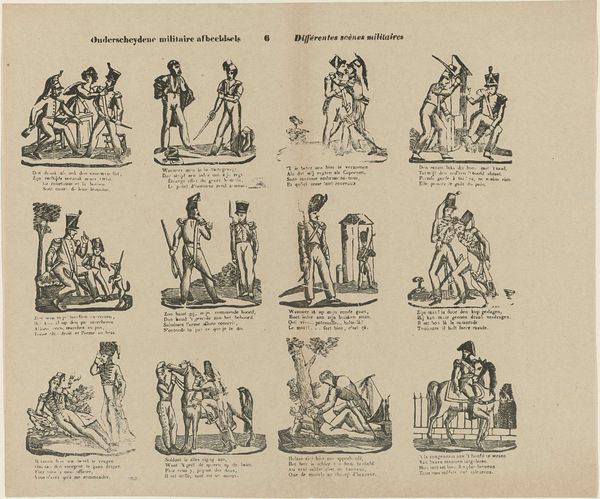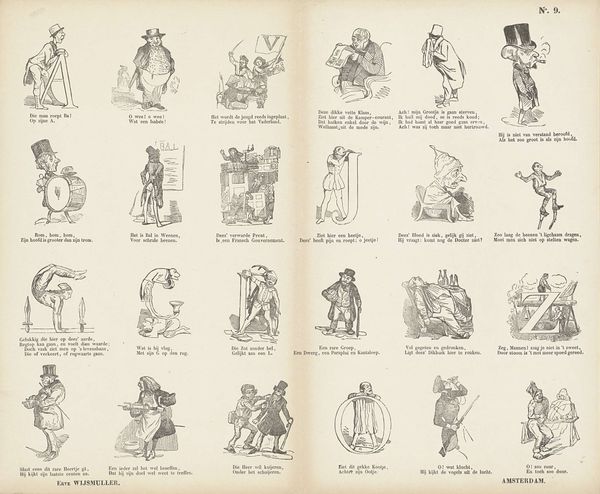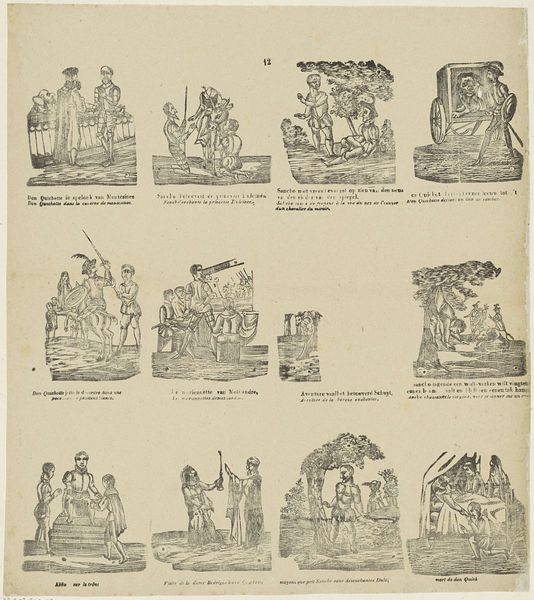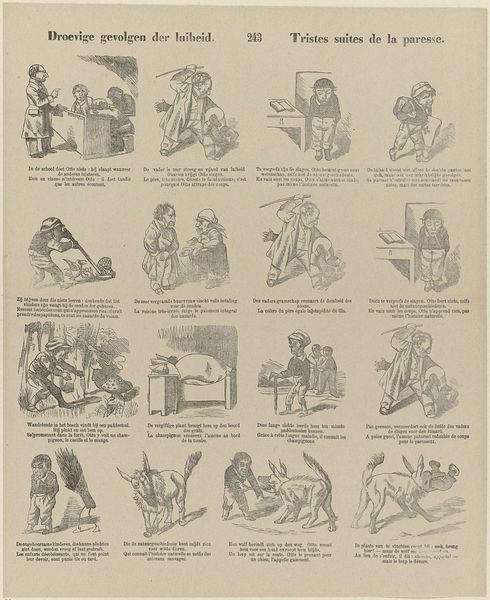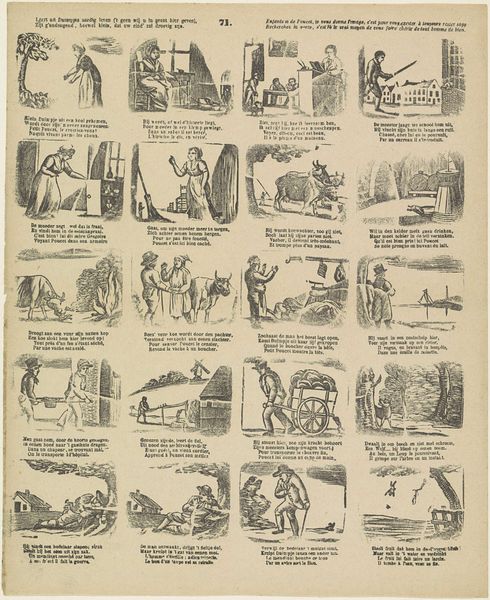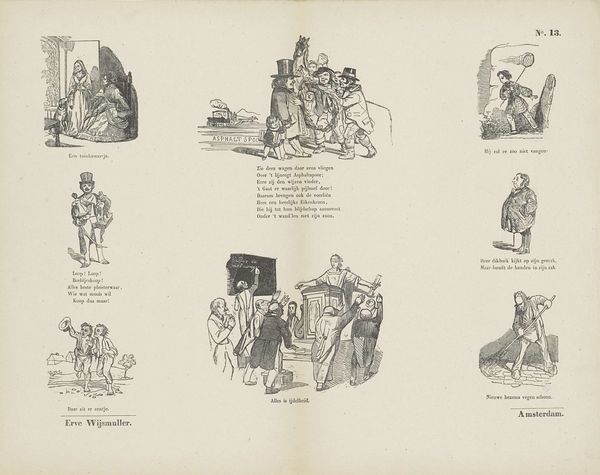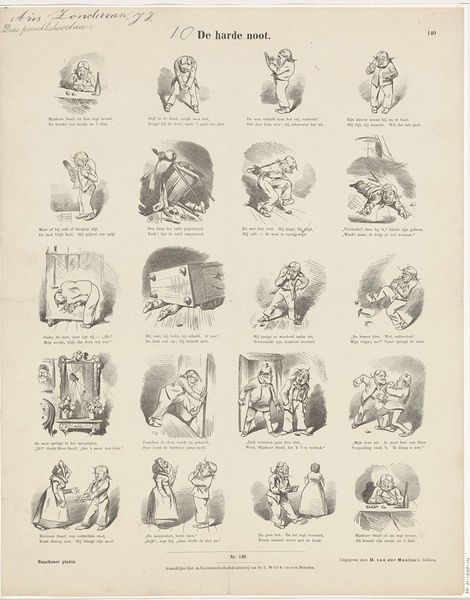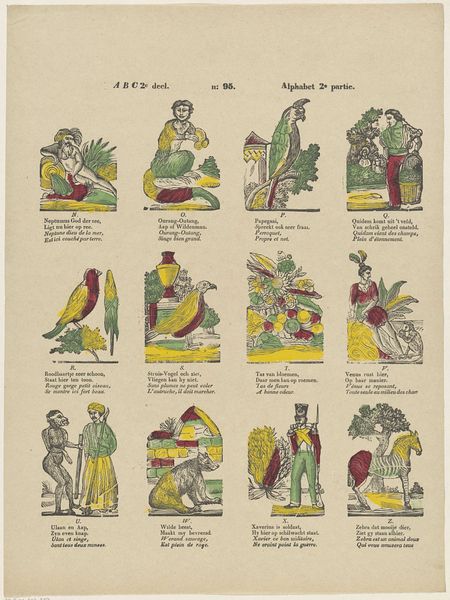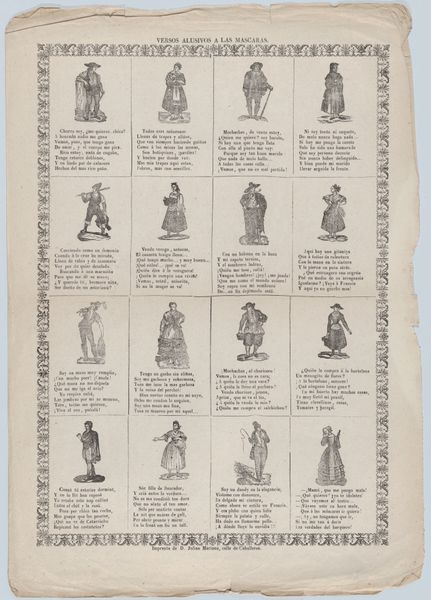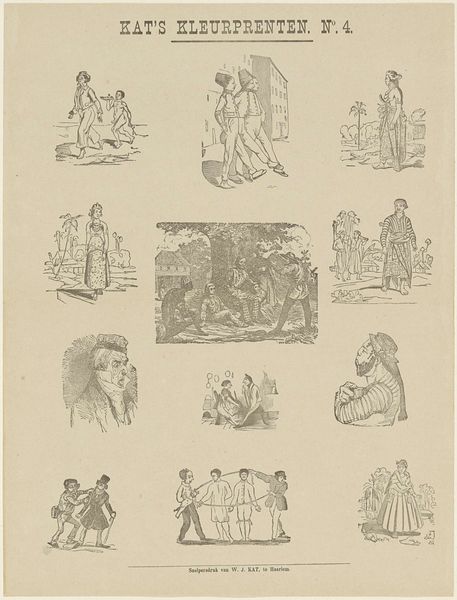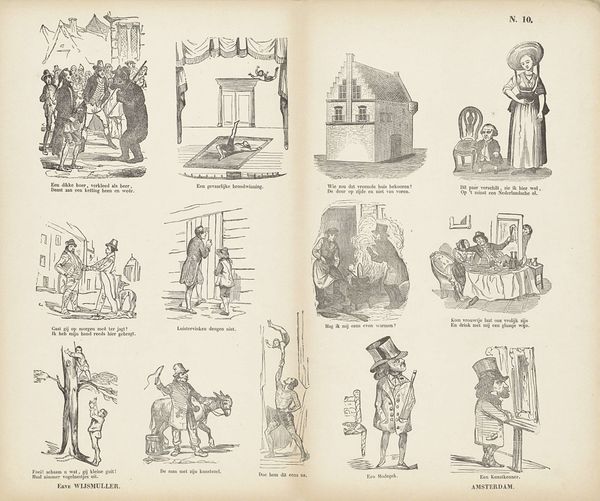
graphic-art, print, engraving
#
graphic-art
#
narrative-art
# print
#
genre-painting
#
engraving
Dimensions: height 405 mm, width 330 mm
Copyright: Rijks Museum: Open Domain
Curator: This engraving, created by P.J. Delhuvenne between 1842 and 1856, is titled "Alphabet 2e deel. / Alphabet 2e partie." It's a rather fascinating piece. What strikes you about it at first glance? Editor: My initial feeling is a sort of wistful charm. It reminds me of a children's book, but with a distinct edge of melancholy. The world is clearly hand-drawn and aged but it comes through as both educational and imaginative at once. The detail and the precision also give off this slightly eerie, nostalgic aura, almost like something recovered from a forgotten attic trunk. Curator: That's interesting. I see this piece more as a cultural artifact, intended for instruction, and rooted in a particular socio-economic moment. The choice of subjects for each letter—from Neptune to soldiers and exotic animals like Zebras, offered a glimpse into a wider world to its intended audience, one presumably wealthy enough to afford educational prints like this one. Editor: I get that—definitely educational, designed to impart knowledge. But the "execution," so to speak, also feels quite playful, right? There's almost something surreal about the animals. The Orang-utan, perched on a rock. They seem like characters from a half-remembered dream, full of their own symbolism. Curator: Precisely! Symbolism played a huge part in how society at that time codified and reinforced values through imagery. Each character in the alphabet isn't just a representation, they would bring immediate associations with a particular character. Think about the Zebra, and how it represents nature from a far off and seldom-visited region, an "exotic animal". That tells us what was important. Editor: Agreed, context is key to understanding why each symbol appears and how they would have interpreted back then, which makes the engraving an accurate window in the values and expectations of the time. Also, from a simply artistic perspective, I can see and celebrate its craftsmanship. What do you appreciate most about this artifact? Curator: What impresses me the most, and this speaks to the socio-economic piece we touched upon earlier, is this engraver’s ability to capture and reflect the collective imagination of their time. That's something that really allows the viewer a perspective through the artist and all the way back to their environment, their period. I mean, we wouldn't be speaking about it otherwise, would we? Editor: Nicely put! It is indeed a great feeling when art continues speaking decades after it was crafted.
Comments
No comments
Be the first to comment and join the conversation on the ultimate creative platform.
